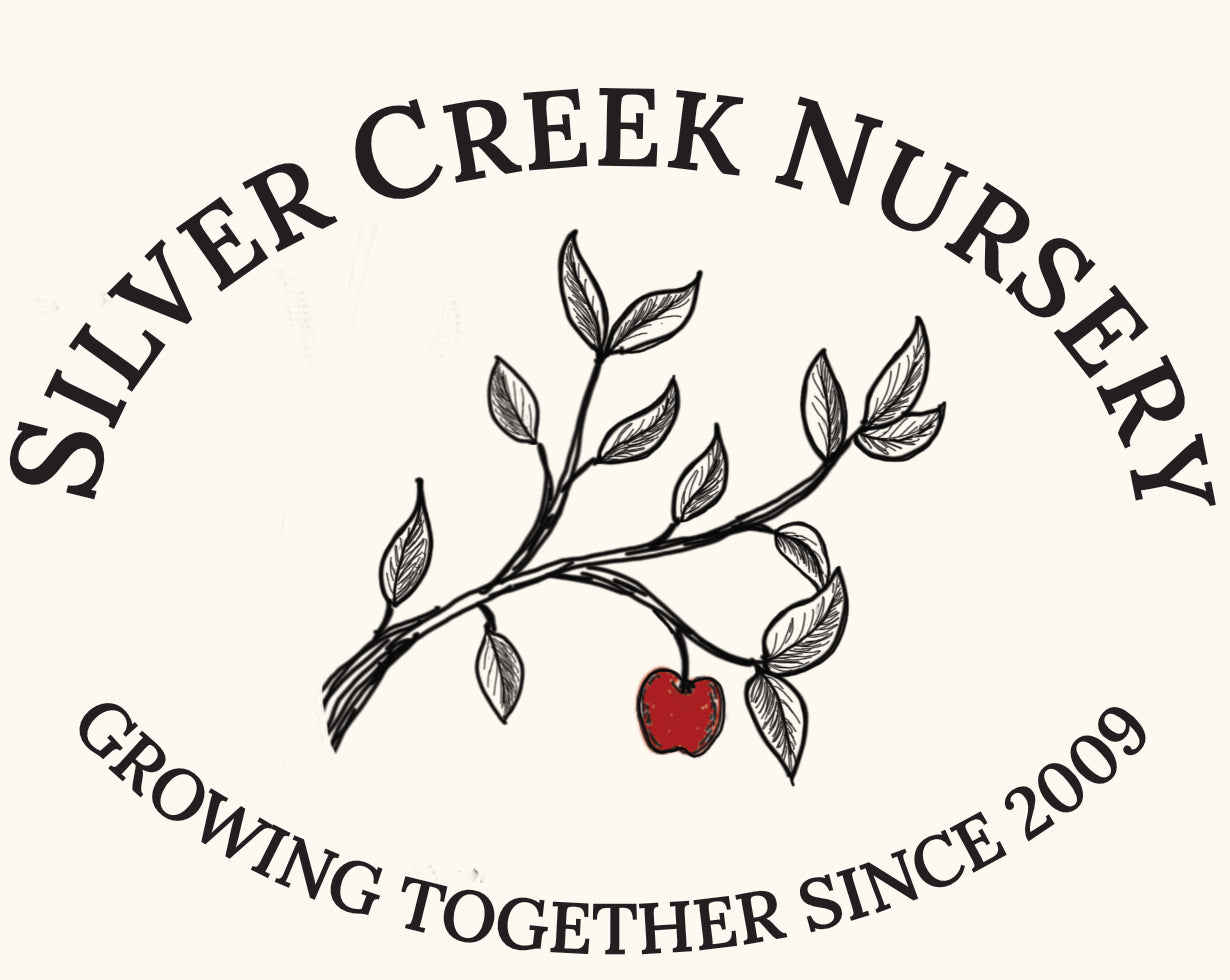Silver Creek Nursery Ltd.
Yellow Gravenstein Apple
Yellow Gravenstein Apple
History: Generally just known as Gravenstein, it is unknown when or where exactly these apples came from but they were imported from France to Denmark in the 1600s by Count Frederik the Younger and planted at the summer residence of the Danish royal family, Gråsten Palace. As a result the variety was named Gråsten (Danish for graystone) which translates to Gravenstein in German. This apple has been popular in Canada since the 1820s, particularly in Nova Scotia, and provided the dried apples and applesauce for American soldiers during WW2. In 2005 it was declared the national apple of Denmark.
Why We Grow It: Yellow Gravenstein's excellence as a fresh eating and cooking apple makes it easy to see why it is grown in so many different countries, even if the tree is slow to bear fruit and is prone to many common fruit tree diseases (although we haven't had much issues growing it here). It has a great sweet/tart flavour and is crunchy and juicy. The fruit is a nice yellow with red striping.
Fruit Specs
Fruit Specs
Recommended Use: Fresh eating, cooking
Fruit Size: Medium-large to Large
Storage: Keeps until October when stored in cool, humid conditions
Harvest: September - Early
Cider Class (if applicable):
Growing Specs
Growing Specs
Canadian Hardiness Zone: 3
Soil Preference: Sandy loam, loam, clay loam. Prefers average to moist conditions, avoid planting anywhere that floods for more than two weeks in the spring. Generally quite adaptable to different soil conditions.
Flowering Time: Early
Bloom Colour: White
Pollination Requirements: Triploid, requires two pollinators of different non-triploid apple varieties that bloom around the same time.
Sun/Shade Requirements:
Full sun (approx. 8-10 hours of sun daily)
General Growth Habits:
Vigorous and hardy with a spreading growth pattern, slow to start bearing fruit but has good crops once it does, semi-spur bearing. Slightly susceptible to mildew and fireblight, scab and canker, though it grows well for us in our test orchard.
General Disease Resistance Rating: Medium. This is a combined rating of how the cultivar produces and grows in our test orchard, along with the cultivar's known disease resistences/susceptibilities. Remember, just because a variety is susceptable to something does not mean it will get it. The microclimate, pests and disease present within your orchard/area will differ from ours too, creating a unique growing condition that may or may not induce certain pests or diseases.
Shipping vs. Pick Up
Shipping vs. Pick Up
CLICK HERE to see how shipping compares to pick up.
Shipping: Every year we ship thousands of trees across Canada (except BC due to CFIA regulations). We carefully bag roots in damp sawdust, then box them and send them out via courrier. CLICK HERE to see our shipping policy.
Pick-up: We also have thousands of trees picked up from our nursery each year. The pick-up options is free, though you must wait until you have been emailed a confirmation that your order is ready to pick up, which will have further information such as hours, locations, etc. We really appreciate if you can make an appointment to pick up, then we can be as organized as possible during our busy season.
Size at Purchase
Size at Purchase
Our grafted fruit trees are graded into three categories, and the size includes the rootstock:
- 50-80cm whip: may have some minor branching, this grade is like a "b-grade" size tree in industry standards; we include in this price category trees that are over 1m but have some scarring or mild crookedness.
- 1m+ whip: may have some minor branching, aka feathering. This is like a typical one-year whip in industry standards.
- 1m+ branched: these trees must be over a meter and have 3 or more branches 30cm or longer, as well as a central leader. They are essentially a two-year tree in industry standards.
- For stone fruits only - 1m+ whip/branched: We have combined these grades based on the way these trees grow and are grafted. Plums, apricots, cherries, and peaches naturally tend to grow more vigorously compared to apples and are more likely to form larger trees with more branches. However, we only chip bud them so they are a one-year old tree by industry standards. Apples and pears are partially bench grafted, and using the knip-boom method the grading becomes more complicated, hence the reason they are split into different grades.

Orders that are cancelled last minute due to size (being "to small"), will still incur the applicable cancellation fees if the trees are true to our grading standards as per the agreement of sale when the order was placed.
Couldn't load pickup availability
Share


